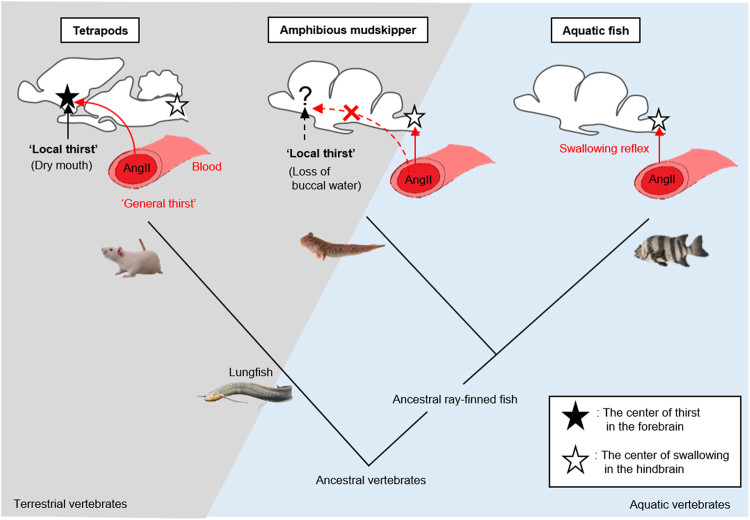Figure 5.
Schematic diagram showing evolution of the brain mechanisms of thirst. Black and white stars indicate the brain regions controlling thirst and swallowing reflex, respectively. In terrestrial tetrapods, systemic angiotensin II (AngII) directly acts on the forebrain (i.e., the center of emotional behaviour) to induce thirst (‘general thirst’), and oropharyngeal signals (e.g., dry mouth) also induce thirst (‘local thirst’). These signals are integrated in the forebrain and regulate motivation to move to water. In aquatic and the amphibious ray-finned fish, AngII acts primarily on the hindbrain (i.e., the reflex center) to induce swallowing of buccal water. In addition, in the amphibious mudskipper, loss of buccal water on land induces ‘local thirst’ to evoke migration to water, possibly through the forebrain, although the neural basis is not identified. Because ‘local thirst’ exists both in tetrapods and in the amphibious fish, this thirst appears to be important for invasion onto the land during the evolution of vertebrates. It is assumed that agnathan, cartilaginous fish, and possibly ancestral vertebrates whose body fluids are isosmotic have not developed the regulation of drinking.

